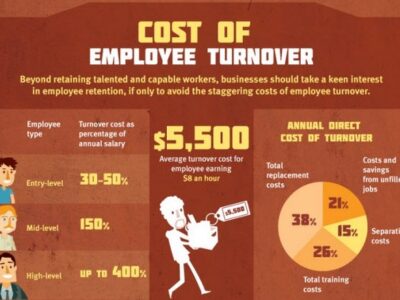Psychological safety is something that is incredibly important in the workplace, but many misunderstand what it is and why it matters. Psychological safety in the workplace is an expectation held by the entire team that they won’t be embarrassed, rejected, humiliated, or punished for things they shouldn’t be, such as presenting ideas, getting feedback, or taking risks. Psychological safety empowers employees to take risks and be courageous.
In our latest episode of the Team Building Saves the World podcast, we talked to Constance Dierickx—world-renowned consulter better known as “The Decision Doctor” and author of Meta-Leadership: How to See What Others Don’t and Make Great Decisions.
During our conversation, Dierickx touched on the importance of psychological safety and its necessity in the workplace, saying, “you can’t expect people to exhibit courageous behavior if you’re going to punish them for making mistakes.”
In this article, we’ll take a close look at psychological safety at work, why it matters, and how to create it in your workplace, as well as some of the common obstacles with implementing psychological safety in the workplace.
What is Psychological Safety, and Why Does it Matter?
First, let’s focus on what is psychological safety exactly. Psychological safety is about feeling comfortable and accepted in the workplace. Employees who feel psychologically safe are willing to share their ideas, take risks, accept constructive criticism, and communicate freely. They know that they won’t be punished or made fun of for trying something new or taking a risk.
You might be thinking, “isn’t that just trust?” While the two are similar, they are not the same thing. Trust is about being confident in others’ actions and decisions, while psychological safety is more about your own comfort in speaking up and being yourself. Psychological safety is a necessary part of building trust though.
Psychological safety is important in the workplace because it helps foster things like trust, confidence, communication, and a healthy workplace culture, as well as helping empower employees to do their very best.
For example, a report from Accenture looked at various studies and polls on psychological safety at work. They found that workers who felt psychologically safe were 50% more productive, 76% more engaged, 57% more likely to collaborate, and 76% less stressed. Those workplaces also had 27% less turnover than psychologically unsafe workplaces.
Those numbers are somewhat staggering. Psychological safety can have massive impacts to your business that can help you and your employees achieve your goals. They will be motivated, driven, inspired, and ready to collaborate with their fellow coworkers. The importance of building psychological safety in a team should not be underestimated.
Signs of Psychological Safety in the Workplace
With that what and why covered, let’s look at how you can identify psychological safety in the workplace. Being able to see the signs of a psychologically safe workplace will help you figure out where your workplace needs improvement. Here are some of the more common signs of psychological safety at work.
Strong Communication
Strong communication is the foundation of psychological safety. You and your employees should be comfortable talking to each other, whether about serious business topics or casual water-cooler chats. Seeing employees communicate freely and comfortably is a good sign that your workplace is going in the right direction.
Constructive Criticism and Feedback
Tying into communication, constructive criticism and feedback are also key to psychological safety. Employees should feel safe giving and accepting criticism/feedback, and that feedback needs to be constructive and useful. If employees can present their ideas, receive constructive criticism, and implement it, it’s an indication that your workplace is psychologically safe.
High Morale
High morale may be a bit vague, but it’s a strong sign of a psychologically safe workplace. If your workplace isn’t psychologically safe, your employees will be fearful and likely won’t be happy with their position. It can also create issues around employee mental health and wellness. That all means low morale. Conversely, if your workplace is psychologically safe, your employees are much more likely to be satisfied with their jobs and enjoy them.
Good Leadership
Most importantly, any psychologically safe workplace is going to have good leadership. People follow by example, which means leadership has to demonstrate psychological safety so their employees have an example to follow. Leaders should have an ownership mindset so they can instill the same mindset in their teams.
Dierickx highlighted this point during our podcast when she said, “a courageous leader understands that if you don’t create an environment for people to be courageous, they won’t be.“ Leaders need to showcase the qualities they expect of their employees, and they need to create a psychologically safe workplace by starting at the top. If managers and bosses can speak freely, take risks, and give/accept criticism, employees will follow suit.
How to Create Psychological Safety in the Workplace
The next step is knowing how to create psychological safety in the workplace. Changing a company’s culture is never easy, but it’s possible if you know the right strategies and techniques.
This advice may be tiresome, but it’s still very valuable; lead by example. Culture changes in a workplace from the top down, so you and your fellow leaders need to first lead by example. Communicate frequently with employees, listen to their criticisms, give constructive feedback, make sure everyone is included, and allow yourself to be vulnerable. This alone can create a massive ripple effect throughout your organization as your employees follow your example.
Another method for how to create psychological safety is with team building events and exercises. These can help you focus on specific skills and qualities that are necessary for psychological safety, such as communication, trust, and teamwork.
For example, our Integrity event is a great example of a fun event that can help you build skills that are essential to psychological safety in the workplace.
No matter what you decide to do, remember that you are ultimately helping your employees. Take their needs and preferences into consideration. Not all employees and teams are the same, so what makes one team feel more safe may not help another team. Always remember to keep your employees and their preferences in mind when making changes to your organization.
Overcoming Obstacles
Before wrapping up, it’s important to note that building psychological safety in a team isn’t always easy. There are many common obstacles that people face when trying to create a psychologically safe workplace, so let’s take a look at how you can overcome them.
Attitude and Culture
One of the biggest obstacles to psychological safety is attitude/culture. This includes things like bullying, blame culture, and more. If your employees are bullying and blaming others, it will be impossible to have psychological safety at work.
To overcome this obstacle, you have to change your workplace culture. As with psychological safety, that starts with leading by example. Leaders need to exhibit the right attitudes and behaviors to show employees how they should behave.
You also need to make sure that your cultural changes are implemented throughout your organization. They should be baked into your standard operating procedures, from the CEO all the way down to the bottom.
Fear and Lack of Trust
Another common obstacle is a lack of trust and the fear that comes with it. Your employees won’t feel psychologically safe if they can’t trust you or their fellow employees and are constantly fearful of potential repercussions due to a toxic work environment.
As a leader, you need to make sure that your workplace is a safe and trusting place. As with most things, this starts with leadership. If you make promises, follow through with them. Listen to your employees and take their criticism and concerns seriously. That can go a long way in instilling trust in the workplace.
You also need to focus on positive feedback. Let employees try new things and take risks, but don’t punish them for it if things go wrong. Failure and mistakes are necessary parts of risk taking and innovation. Instead, help them succeed with constructive criticism that can guide them to success.
Poor Communication
Lastly, poor communication can also stand in the way of creating a psychologically safe workplace. Poor communication can lead to unclear expectations, disorganization, uncertainty, fear, and more. These can all undermine the psychological safety of your workplace.
Thankfully, this one is fairly easy to address. As a leader, you need to communicate clearly and confidently with your employees. During meetings, make sure everyone has a chance to be heard. Be approachable and make sure employees can come to you with problems, concerns, successes, etc. Set your expectations very clearly, and make sure everyone is aware of them. Doing this can set the tone for the rest of your team.
Build a Better Workplace
Psychological safety in the workplace is incredibly important. It can make your workplace more engaged, productive, collaborative, enjoyable, and safe. As leaders and managers, it is your job to lead by example and build a psychologically safe workplace.
You can build a workplace with psychological safety with the help of TeamBonding. We have a wide range of events and activities that are perfect for building a psychologically safe workplace. Get in touch with us today and start changing your workplace for the better.















